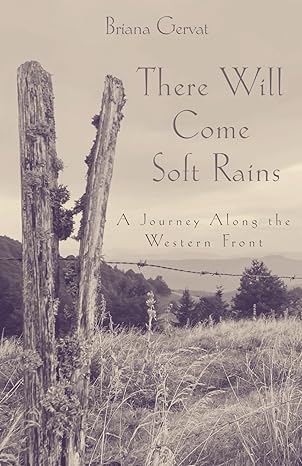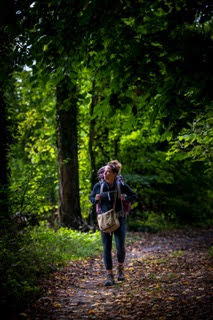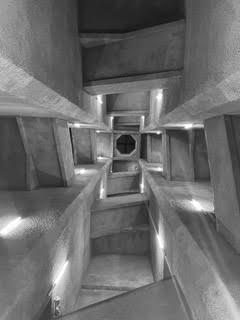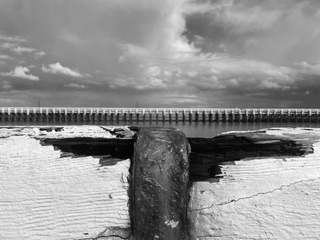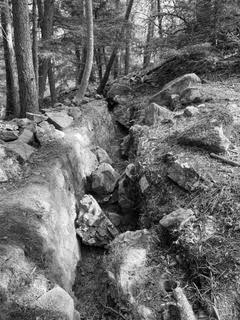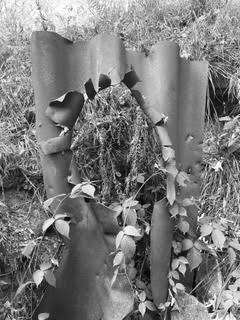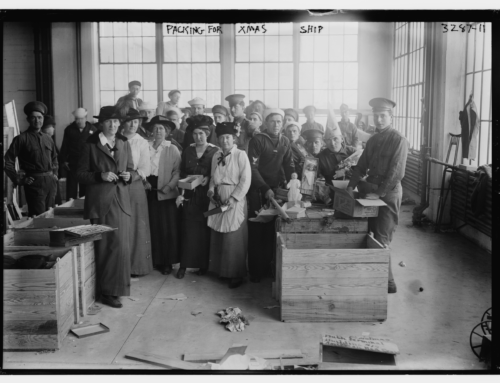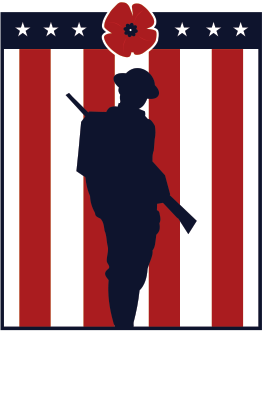There Will Come Soft Rains: A Journey Along the Western Front
Published: 12 August 2025
By Briana Gervat
Special to the Doughboy Foundation website
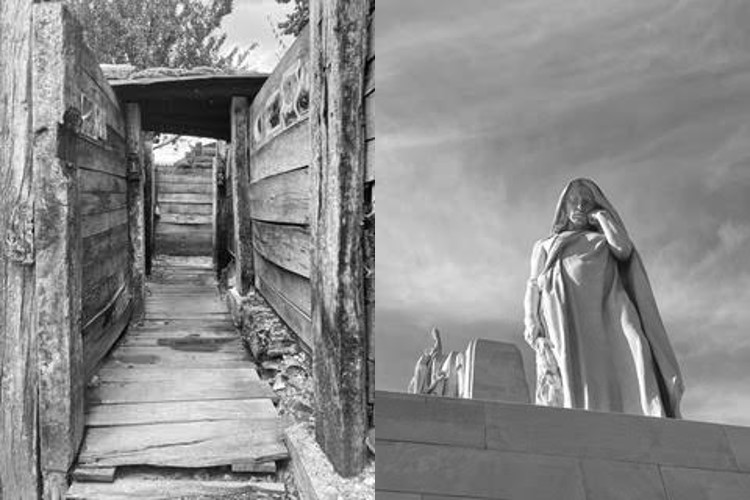
Briana Gervat gang 8 and 3
Scenes along the Western Front: Trenches in the Vosges after Munster (left); Canada Bereft at Vimy Ridge (right).
The Dream of Walking the Western Front
On a late April evening in the spring of 2022, after two long years of the pandemic, the world that had been shut down for so long, was just beginning to open up again.
It was just after midnight that I learned that it is possible to walk along the Western Front. Up until that moment, the Western Front, for me, was a place that existed only in history and memory. A metaphorical line that separated the world before the war and everything that came after. Not a literal line. Of course, the wounds of the war are still there, pockmarked as they are upon the landscape.
But on that April night, there it was: a modern map of the Western Front spilling across the screen. I traced my fingers south to north, from one great battlefield to the next; from the mountains to the sea; learning that where there once was war, there is now a path of peace.
And peace, after too many years of its opposite, was something I needed more than anything else.
After two long years of being away from the world I could no longer ignore the quiet ache in my heart; the one that whispered to me of far-away places, and histories that could never and should never be forgotten.
This map of the Western Front was a tapestry of sorts where histories are woven together; the past and the present forever entwined. The line(s) that defined the Western Front seemed to me to be something that was severed and it could not be sown back together again. The scar is still there. After the pandemic, my heart felt like that too. So did America. I couldn’t help but think that after the Great War, the world must have felt like that too.
At the end of August 2022, I left for France to try to make sense of the world in the only way I knew how: by walking through it, one step at a time. This was to be a thousand-kilometer journey of remembrance. I would camp where I could, and stay in hotels where I could not. Slowly, ever so slowly, I would make my way south to north, following history through France and Belgium.
The first miles of the everyday were always easy. I would rise with the sun when the world was still quiet, roll up my sleeping bag, pack up my tent, lace up my hiking boots, and set off north along the Western Front. Not a day that passed that I did not encounter reminders of the Great War. They were everywhere: In shallow trench lines that time has done little to hide; in concrete fortifications hidden among the rocks and the trees; in small cemeteries recessed from the road; at memorials to the missing; so many men, so many lives lost the Great War.
This was when the way became more difficult. Not because of the miles that had been walked, but the near constant reminders that The War to End All Wars, didn’t end war at all.
For thirty-six days I walked from one end of the Western Front to the other. The Vosges were daunting; the mountains tall, far reaching, all encompassing. There were days and days and days of rain. Nights too. It was not long until I entered the Land of Memory that is Verdun. There, I did not stay long for it was a place filled with heaviness, sadness, and so much loss. When the road widened and flattened, the hills lessened and the air grew cooler. Then came the Marne where battles raged from the beginning of the war until its end. Sleeping under the stars, it was hard to reconcile how there could be so much peace in one place and so much war all at once. By the time I arrived at the Somme, after hundreds of miles of walking, I wondered how could this possibly be the same war? For every step was a sadness. Every mile, a lamentation. Every place that I passed through brought with it more questions than answers. How could we ever understand it all?
But this journey was not without beauty.
There were ruins; ruined before the war began.
There were cathedrals. Some that withstood the war. Some that did not. From their bell towers came the songs of angels ushering in the day, the night, and all of the hours in between.
There were wildflowers and forests and wind that whispered of seasons soon to change.
There were stars that filled every stretch of sky. Light among darkness. Hope among sorrow.
My favorite part of this journey was that gentle stretch of time between the end of the day and the beginning of the night, when I would sit quietly in the world outside of my tent and think about the war, the world, and all of the stories still waiting to be told.
These moments made me realize that poetry can still be found in these places, just as it was found in the hearts of men who fought in this war. And while the Great War should never be forgotten, it is this beauty, too, that must be remembered, for it is this beauty that buoys us from one heartbreak to another in this tumultuous sea called life.
Returning From the Front
When I returned home, I quickly learned that walking 500 miles was easy compared to writing about it. One took only thirty-six days and the other took over a thousand. For three years, I sat down to write this book. I wanted to write about all of it: the war, the peace, the hope, the sorrow. I wanted to honor those who lived, and died, during the Great War. I wanted to remember them because I believe that even after a century has come and gone, the Great War is a story worth telling. One that must be told over and over again, and never forgotten.
What Can Still be Learned from The Great War?
There is an ache attached to the Great War: a Great Unknowing; a Great Unraveling. The Great War was a turning point in history. The years between 1914 and 1918, a separation: everything before the war and everything after. And here we are, over a century later, still experiencing its reverberations. The Great War still haunts us. The scars along the Western Front remain.
There Will Come Soft Rains is a story of this journey. It is not a book of dates and names, but a reflection of the past and a contemplation of the present; one step at a time along the Western Front.
External Web Site Notice: This page contains information directly presented from an external source. The terms and conditions of this page may not be the same as those of this website. Click here to read the full disclaimer notice for external web sites. Thank you.
